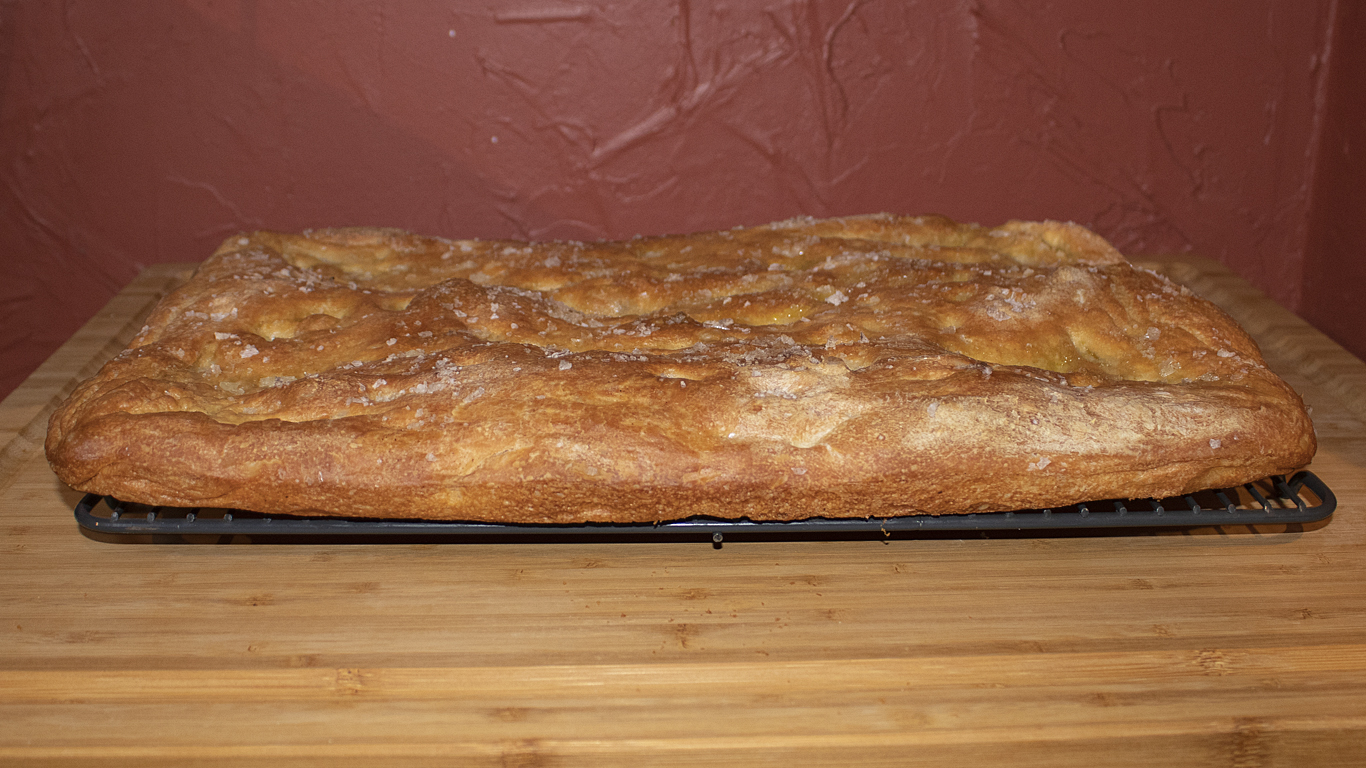
Durum-Egg Sourdough Bread

This is a nice 46% freshly milled Durum bread with some bread flour. I added some egg yolks for some additional flavor and moisture and a little honey for sweetness.
All and all it came out very nice with the nutty durum flavor coming through. It made excellent grilled bread with some brushed olive oil and melted fresh mozzarella on top.
I topped one of the loaves with black sesame seeds which is one of my favorites.
Formula
Levain Directions Build 1
Mix all the levain ingredients for build one (including the seed starter) together for about 1 minute and cover with plastic wrap. Let it sit at room temperature for around 6-7 hours or until the starter has almost doubled. I used my proofer set at 78 degrees so it took around 4 hours for me.
Levain Directions Build 2
Add in the flour and water as indicated and mix until incorporated by hand. Cover and let sit another 3-5 hours until doubled and you should see plenty of activity.
Either use in the main dough immediately or refrigerate for up to 1 day before using.
Main Dough Procedure
Mix the flour and water together in your mixer or by hand until it just starts to come together, maybe about 1 minute. Let it rest in your work bowl covered for 20-30 minutes. After 30 minutes or so add the salt, starter (cut into about 7-8 pieces), eggs, olive oil and honey and mix on low for 5 minutes. Note: If you are using the Ankarsrum mixer like I do, add your water to the bowl first then add in the flour. After your autolyse add in the starter, salt, honey and olive oil and mix on low to medium low for 15-20 minutes.
Remove the dough from your bowl and place it in a lightly oiled bowl or work surface and do several stretch and folds. Let it rest covered for 10-15 minutes and then do another stretch and fold. Let it rest another 10-15 minutes and do one additional stretch and fold. After a total of 1.5 hours place your covered bowl in the refrigerator and let it rest for 12 to 24 hours.
When you are ready to bake remove the bowl from the refrigerator and let it set out at room temperature still covered for 1.5 to 2 hours or if using a proofer set at 80 degrees for one hour. Remove the dough and shape as desired and cover with a moist tea towel or plastic wrap Sprayed with cooking spray and let rise at room temperature for 1 1/2 – 2 hours. (I use my proofer set at 80 F and it takes about 1 hour to 1.5 hours).
Around 45 minutes before ready to bake, pre-heat your oven to 500 degrees F. and prepare it for steam. I have a heavy-duty baking pan on the bottom rack of my oven with 1 baking stone on above the pan and one on the top shelf. I pour 1 cup of boiling water in the pan right after I place the dough in the oven.
After 1 minute lower the temperature to 450 degrees. Bake for around 35 minutes or until the breads are nice and brown and have an internal temperature around 200-210 F.
Take the breads out of the oven when done and let them cool on a bakers rack for as long as you can resist.












